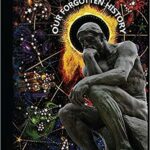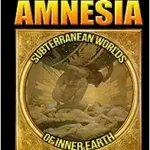
How Christ Became King
Membership Invitation
Become a Made Member – Join the Truth Mafia!
👤 For just $8.88 a month, become part of a unique community that dives deep into the truths of the universe. As a member, you’ll gain exclusive access to a wealth of resources:
- Members-Only Catalog: Explore a curated collection of content available only to our members.
- Movie Decodes: Uncover hidden meanings and secrets in mainstream media.
- Exclusive Live Events: Participate in live sessions tailored for our community.
- Private Video Uploads: Access videos that delve into complex topics, reserved only for members.
- WhatsApp Group: Connect with like-minded individuals in our members-only chat group.
🔗 Ready to unlock the secrets? Join the Mob Today
Sponsor Offers
Check Out Our Trusted Sponsors – Explore Exclusive Offers:
- 🔗 Beware the 5G Threat: Protect yourself and your family with our expert guidance on EMF protection. Use Promo Code: TruthMafia for special discounts. Safeguard Now
- 🔗 Cultivate Your Healing Herbs: Start your medicinal garden with our easy-to-use home kit. It is ideal for anyone looking to enhance their health naturally. Get Your Kit
Summary
➡ A large Mithraic temple was found under a church, where Roman elites secretly worshipped. Mithraism, like Catholicism, had seven grades and rituals similar to baptism and communion. The religion also had concepts of life, death, and rebirth, and its influence can be seen in Christian traditions like the three wise men and the December 25th birth of Jesus. Helena Blavatsky, founder of the Theosophical Society, spread these ancient teachings from various civilizations, influencing secret societies and modern mysticism.
Transcript
The Vatican is the smallest country in the world, an autonomous city-state surrounded by Rome, in Italy, that is governed by an absolute monarchy with the Pope as its head. The Vatican mints its own euros, prints its own stamps, issues passports and license plates, operates media outlets, and has its own flag and anthem. It is also the seat of power for the Catholic Church, which is the largest branch of one of the world’s major religions, with an estimated 2 billion Christians in the world and over 1 billion of them being Roman Catholics. But what led to the rise of Christianity in the Roman Empire, which at one time persecuted Christians, only to later adopt it as its official religion and disseminate it across its vast empire as its official faith? The answer provided by the Vatican can be found in its Hall of Constantine, where frescoes painted by Raphael illustrate the life of the first Roman Emperor to officially recognize a Christian religion and symbolically represent the victory of the Church over paganism.
On the walls of the four rooms, episodes from the life of Constantine are told, but are they historically accurate or comprised of propaganda? In the 4th century AD, the Roman Empire was divided into four major areas. Each region had its own ruler. But when Constantine’s father, who ruled the West, died in York, England in the year 306, his army declared Constantine ruler of the entire Roman Empire. This sparked a bloody struggle to determine who would end up Emperor. In the year 312, Constantine was pitted against the general Maxentius, who controlled the central region, including the city of Rome.
Their famous struggle for power was depicted 1200 years later in these frescoes by Renaissance artist Raphael, based on early Christian sources. Raphael painted these narratives on the Vatican walls, and it’s these frescoes that tell us the traditional story of how Constantine converted to Christianity. According to the tradition depicted in Raphael’s paintings, Constantine’s forces were greatly outnumbered, but then Constantine is said to have had a vision of a cross in the sky, followed by a dream of Jesus that changes life and the empire forever. In that moment, Constantine was said to have denounced the Roman paganism that he was brought up with in favor of a newfound belief in Christianity.
He ordered his soldiers to paint their shields and banners with the symbol of the cross and led his army to victory. He then went on to convert the entire Roman world to the Christian faith. That’s what the Christian tradition tells us, but there’s a much older work of art that tells a different tale. It’s called the Arch of Constantine, and Constantine himself had his arch built in the center of Rome to celebrate his victory over Maxentius. Over six stories high, Constantine’s arch was erected right next to the Colosseum, where Christians were once killed for sport. Constantine’s arch depicts the battle between Constantine and Maxentius for strategic control of the Melvian bridge just north of Rome.
In this panel, Constantine’s face was deliberately hacked out. But here, we can clearly see the defeated Maxentius drowning in the River Tiber. What about depictions of Constantine’s vision of the cross that allegedly converted him to Christianity? Behind Constantine, we see one of his own men carrying a military standard, but there’s no cross on it. We can also see shields very clearly, but none of them have a cross on them either. When we look at the evidence from Constantine’s reign itself, the Arch of Constantine really being the best source we have. In the years immediately following that battle, there’s no trace of Christianity on his monument.
No images of Jesus, no crosses, no Christian symbolism anywhere on his arch. Considering his alleged vision, you would think that Constantine would be championing Christianity, but in fact the only religious symbolism present are pagan. On this panel, Constantine is surrounded by pagan gods, the god of the River Tiber, a winged goddess of victory, and by Roma, the goddess of Rome. An archaeological patchwork of pagan symbolism, compelling evidence that Constantine only adopted Christian ideas to win favour with Roman soldiers and indirectly with the Roman elite, which will soon be evident. When looking at what’s depicted on his arch, what we find are pagan gods from the Roman pantheon and none so prominently rendered as the sun god Apollo.
Is it possible that the story about his vision was added much later, and if so, what would be the point? To gain control of the entire Roman Empire, Constantine needed the support of the officer core and the Roman elite. Many members of these classes belonged to mysterious cult that had been around since before Jesus. That Arian solar cult was called Mithraism. Before Constantine’s alleged vision, he followed the official religion of the Roman Empire, the imperial cult, a pagan religion that worshipped Apollo above all else. Much like the Arian god Mithras, Apollo was the sun god that represented the light of creation.
The Mithraic mysteries were based on Mithras, a solar deity that had an uncanny resemblance to Apollo, as well as to Jesus. On the mountain tops of southern Turkey, incidentally near Constantinople, the new capital Constantine named after himself, we find some of the most interesting monuments of the late Hellenistic period. One belongs to a god who was referred to as Apollo Mithras Helios Hermes, a combination of four separate and distinguishable gods, three from the Greek tradition with Mithras, the Arian sun god worshipped in Armenia, Iran, northern India, and Pakistan. Did Constantine fuse prior solar deities such as Apollo and Mithras together with Jesus to create a super religion that would allow him to gain control of the entire Roman world? According to the imperial cult, Constantine, as emperor, was a superhuman avatar, the link between Apollo and the rest of humanity.
According to the archaeology, Constantine bought into this concept completely. He commissioned this 12-meter tall statue of himself with an enormous head and built into its enormous hairline are holes which were made for some sort of insert, most likely for a raid crown. The image of Constantine with sun rays emanating from his head not only matches the earliest images of Apollo, it also matches the iconography of Mithras. Not to mention Christian art which starts to depict Christ the same way with a halo of light around his head. It seems Constantine was combining all of the gods of light under various names into one.
Apollo, Mithras, and Jesus refashioned into his own image. When Constantine had his arch built, he topped it off with a bronze portrait of himself. Destroyed in antiquity, this statue depicting him riding the same kind of chariot as Apollo, seemingly taking off into the sunny skies. At the very top of the arch is an inscription that states in Latin, Instinctu divinitatis, which describes Constantine as divinely inspired. But the question is, was he inspired by Jesus or some other god? Despite Constantine’s reputation as the first Christian emperor, when he moved this capital to Turkey and named it after himself, the most dominant feature of Constantinople’s skyline was not a Christian church, but a giant column that was once topped by a huge statue of the sun god Apollo.
The statue is long gone and the column is under renovation, but at the time of Constantine, people were worshipping the sun god here. And yet, Constantine’s statue of Apollo was not like other pagan images. He replaced Apollo’s face with his own. That said, in Rome, Constantine’s arch was built off-center on the road so as to perfectly frame another giant statue, the Colossus of Apollo, behind it. As you entered Rome, you would have seen Apollo’s head looming above the statue of Constantine on his arch, as if watching over Constantine. But as you moved closer to the arch itself, the sun god would have dropped below Constantine until he was left standing in the center of the main archway.
As the sun is setting, what is rising is Constantine. The arch is literally reframing of the sun god with Constantine on top of the arch, letting us know of his divine status not only in relation to Apollo, but also in the context of Christianity, merging the great pagan sun gods Mithras and Apollo with his own image, seemingly worshipping Jesus while refashioning him in his own image, thereby turning the anti-Roman rubble we read about in the gospels into a symbol of Roman imperialism. Evidence can be found in the Archbishop’s chapel in Ravenna, Italy, where there’s a 6th century mosaic that depicts Jesus dressed not only as a Roman soldier, but if you look more closely he’s actually depicted as a Roman emperor, dressed for command.
Christ is shown as taking on the role of Roman emperor in a military role, so instead of Constantine depicting himself as Jesus would have dressed, we see Jesus dressed like him. The irony being that after Constantine, Jesus who had been crucified by the Roman army was now depicted as its leader. Archaeological evidence for the appropriation of Jesus as well as prior Arian sun gods does not stop there. One needs only to look beneath the first Christian churches to find buried below pre-Christian temples to Mithras. One of these Mithraeums, as they were called, is hidden below the Santa Prisca church in Rome, where excavators pulled up the floor of the church and discovered one of the largest Mithraic temples ever found.
In cavernous dark rooms below, the Roman elite would worship in secret. The Mithraic mysteries have seven grades, comparable to the seven sacraments in Catholicism, complete with a baptism by water. Depicted is the famous scene where Mithras, the son of the sun, commits the sacrifice of the bull, and through the shedding of its blood the universe has created anew, making possible the regeneration of life. That said, an inscription in Latin is also found here that reads, The scene of bloodletting is an act of salvation by spilling the blood of the bull corresponding to the Christian concept of Jesus offering his own blood to save mankind.
The sacred Mithraic meal consisted of taking the body or the blood of the sacrifice by sharing a meal of bread and wine, basically a communion or Eucharist, resembling the Last Supper, and those that partook in this feast would allegedly live forever. And just as Jesus died and was resurrected, so was Mithras, which is why, at his altar, Mithras is pictured right next to a sculpture of Osiris, the dying and resurrecting God of the Egyptians. The esoteric concept of cyclical life, death, and rebirth is also symbolically expressed in the pre-Christian emblem of the swastika, a solar symbol found in many Christian churches and even depicted on Christian art of Jesus himself.
Of course, Mithras was born on December 25th, a date that was not attributed to Jesus while he was alive and walking the earth, but during Roman times was celebrated as the winter solstice, and the feast of Saturnalia, which went on for twelve days, including gift-giving, which comes down to us as Christmas. There can be no doubt of the Arian Mithraic influence on the Gospels, as one needs only to look at the story of the three wise men who were depicted at the church of Saint Apollinaire Nuevo in Italy. The iconography is still Mithraic, the three wise men, or Arian Magi, that appear at the birth of Christ with gifts, or wearing Phrygian caps, the official hats of the Mithraic priesthood, or Magi, and even Mithras is depicted wearing the same style of hat.
And although there are no Christian symbols on the arch of Constantine, the arch is literally surrounded by eight Arian Magi, wearing the Phrygian hats of the Mithraic priesthood, eight being symbolic of the planet Venus, which is also known as the Morning Star, a term also used to describe Jesus in King James, and in Latin known as the Lightbearer or Lucifer. Which brings us to Madame Helena Blavatsky, founder of the Theosophical Society, and who published a journal called Lucifer that included articles on philosophical, scientific, and religious topics. She became famous for introducing and disseminating Eastern or Arian mysticism to a Western audience.
Her published work, including The Secret Doctrine, put forth ancient teachings from diverse civilizations, such as those in India, Tibet, and Iran, including mystery school religions, such as those in Egypt and Greece, like the Eleusinian mysteries, and those of ancient Mesopotamia, including the Mithraic mysteries, which influenced Germanic secret societies that also inspired the Third Reich, such as the Thule and Vril societies that contained esoteric teachings allegedly practiced by the Knights Templar, European alchemists, Gnostics, esoteric Sufism, and the Kabbalah. Of course, like 33rd degree Freemason Albert Pike and other cult authors like Manly Hall, Blavatsky insisted that the modern Jewish mysticism in the form of the Kabbalah, which emerged in southern France in the 1300s, with the publishing of secret texts such as the Zohar, predated Judaism itself, and traced its esoteric origins into prehistory back to the Arians, and the Atlanteans before them, quote, the mysteries of the Jews were identical with those of the pagan Greeks, who took them from the Egyptians, who borrowed them in their turn from the Chaldeans, who got them from the Arians, the Atlanteans, and so on.
My name is Robert Sepper. I’m an anthropologist. My published work is available on Amazon and through all other major book outlets. If you’d like to support my work, you can do that through Patreon.com. There should be a link in the description. Please subscribe for future updates. Leave your thoughts below. Have a wonderful weekend, and I hope to see you again soon. [tr:trw].









